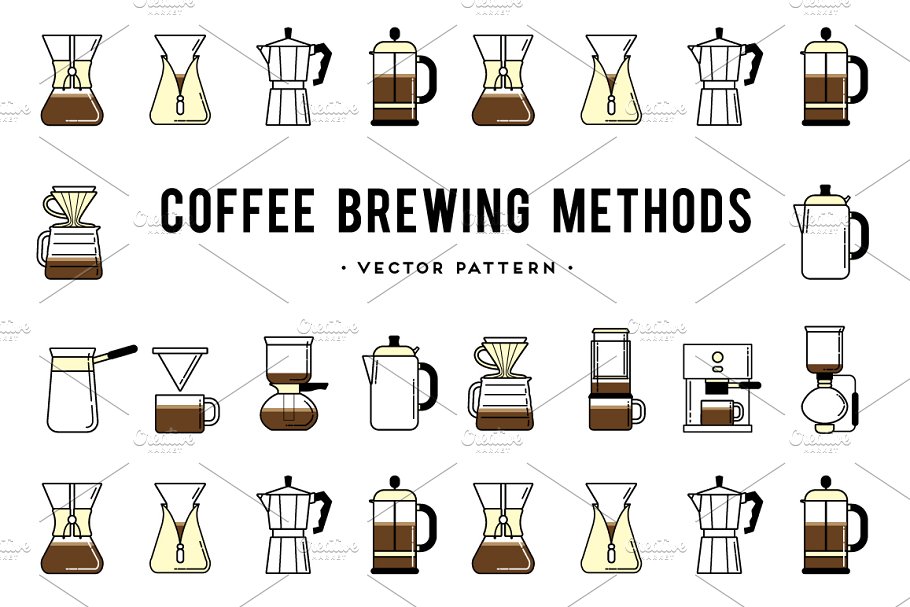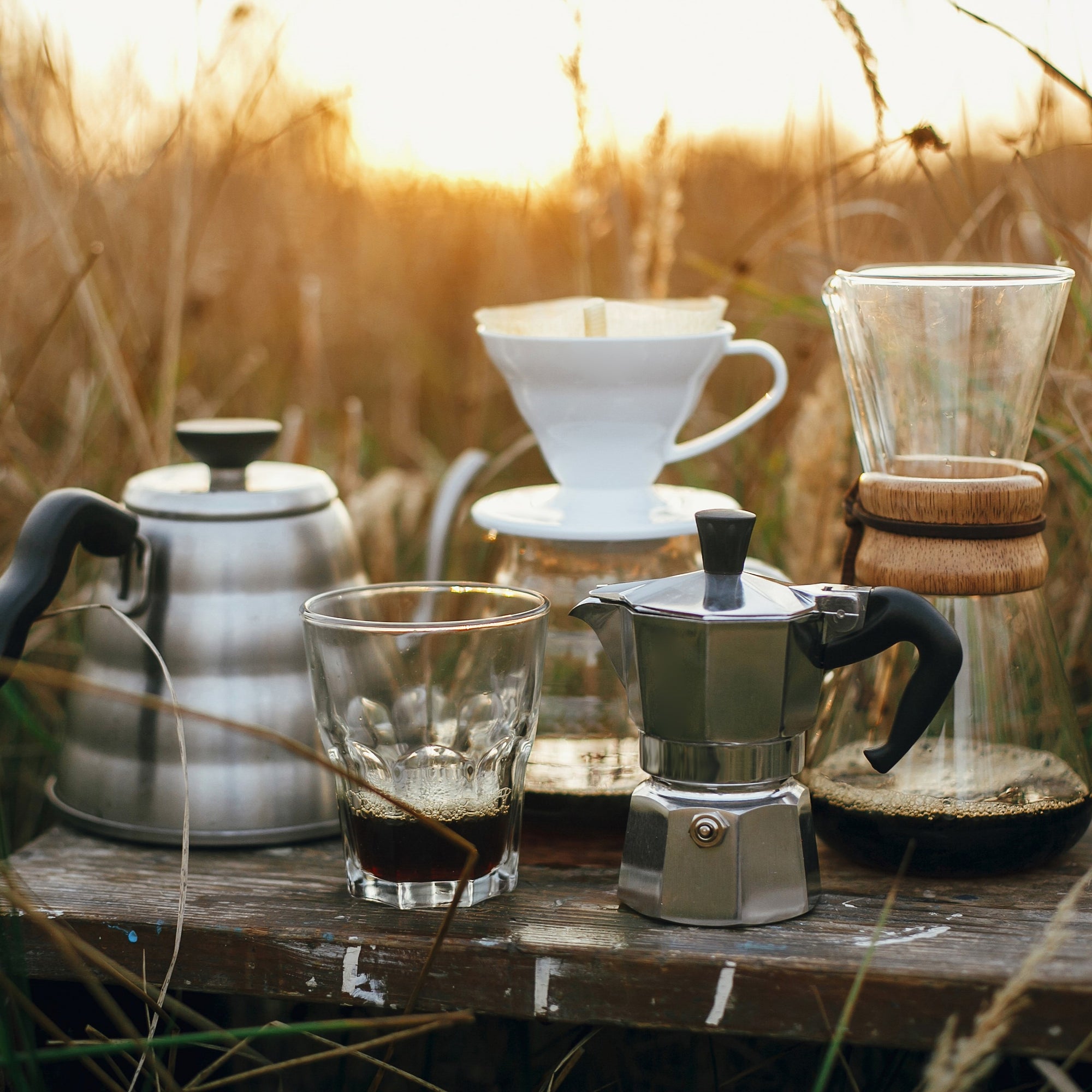The Science Behind Coffee Developing: Exactly How Temperature Level and Time Affect Your Drink
Understanding the science behind coffee brewing exposes that temperature level and time are not mere variables yet pivotal components that dictate the drink's taste account and overall high quality. The optimum developing temperature level typically falls in between 195 ° F and 205 ° F, while the duration of removal differs substantially across various methods. This interplay of elements can lead to a cup that is either disappointing or wonderful. As we discover the nuances of these elements, the concern develops: how can one successfully equilibrium temperature and time to attain that best mixture?
The Chemistry of Coffee Extraction
The chemistry of coffee removal looks into the detailed procedures that transform raw coffee beans right into the aromatic drink enjoyed worldwide. This makeover mostly includes the solubility of various substances existing in the beans, which are affected by variables such as grind size, water quality, and the developing approach utilized.
Throughout the developing process, warm water acts as a solvent, extracting soluble compounds, consisting of high levels of caffeine, acids, lipids, and sugars, from the coffee grounds. Each compound adds to the flavor account, scent, and body of the final beverage. Acids are accountable for tasty and bright notes, while oils add to an abundant mouthfeel.
The preliminary stages of brewing extract acids and sugars, leading to an enjoyable acidity, while long term removal can lead to resentment due to over-extraction of unfavorable substances. Comprehending these chemical interactions is crucial for optimizing brewing methods, as the equilibrium in between removal time and water temperature level can substantially influence the overall high quality of the coffee.
Ideal Brewing Temperatures
Finding the right brewing temperature is crucial for unlocking the complete possibility of coffee flavors and aromas - coffee brewing methods. Study indicates that the optimal range for brewing coffee exists between 195 ° F to 205 ° F(90 ° C to 96 ° C) Within this variety, the extraction procedure properly liquifies the desirable soluble substances in coffee beans, resulting in a balanced and flavorful mug
Brewing at reduced temperature levels, such as listed below 195 ° F(90 ° C ), may result in under-extraction, generating a weak and acidic brew with low-key flavors. Conversely, brewing at temperature levels exceeding 205 ° F(96 ° C) can bring about over-extraction, producing a bitter and rough preference because of the excessive dissolution of undesirable substances, such as tannins.
Additionally, the optimal developing temperature can differ relying on the coffee bean kind and roast degree. As an example, lighter roasts frequently gain from slightly greater temperatures to improve their complex taste profiles, while darker roasts might be better suited to lower temperature levels to reduce bitterness.
Inevitably, maintaining accuracy in developing temperature levels is critical for achieving an unified balance of tastes, making sure that every mug of coffee delivers a gratifying sensory experience.
Effect of Developing Time
Developing time plays an essential function in establishing the flavor account and overall quality of coffee. Shorter developing times can result in under-extraction, leading to a weak or sour flavor, as not sufficient soluble compounds are liquified.
Optimal brewing time varies relying on the technique utilized and the work size of the coffee. A French press generally needs regarding four mins, while coffee removal is normally completed within 25 to 30 secs. It is vital to calibrate brewing time in conjunction with various other variables, such as water temperature and coffee-to-water ratio, to click here now achieve the desired flavor profile.
Recognizing the impact of developing time allows coffee enthusiasts to refine their developing methods, ultimately boosting the sensory experience of their cup (coffee brewing methods). With careful interest to this variable, one can unlock the complete potential of the coffee, exposing its one-of-a-kind characteristics and subtleties
Brewing Techniques and Their Effects

For circumstances, techniques like French press and cool brew enable a much longer steeping time, resulting in a fuller body and durable flavor as a result of raised removal of oils and soluble solids. Conversely, espresso brewing uses high pressure and a much shorter removal time, generating a concentrated shot that emphasizes extreme tastes and a rich crema.
Pour-over strategies, such as Chemex or V60, offer an even more regulated extraction procedure, enabling the brewer to manipulate circulation price and water circulation, which can enhance brightness and clearness. Percolation techniques cycle water via the coffee premises several times, leading to a stronger, commonly bitter flavor.
Last but not least, the usage of paper filters versus metal filters can additionally influence the last taste; paper filters generally produce a cleaner cup by trapping oils and fine particles, while steel filters permit more oils to go through, adding to a fuller mouthfeel - coffee brewing methods. Comprehending these nuances can elevate the coffee experience substantially
Tips for Perfecting Your Brew
A well-executed brew can transform also the most basic coffee right into an impressive experience. To accomplish this, interest to detail is essential. Beginning with high-quality, newly baked beans, as their taste profile see this lessens over time. Grind the beans simply before brewing to take full advantage of freshness, guaranteeing the work size matches your developing technique-- coarser for French press and finer for coffee.
Water top quality plays an important duty; use filtered water devoid of impurities. The suitable brewing temperature level ranges between 195 ° F and 205 ° F(90 ° C to 96 ° C ) Too warm can swelter the coffee, while as well great may under-extract flavors.
Timing is just as vital. For immersion techniques, soaking for three to five mins is optimal, whereas drip approaches commonly take around 5 mins. Experiment with brew times to find your favored stamina.

Verdict
In recap, the intricate partnership between temperature level and time is paramount in the coffee developing process. Recognizing these clinical principles empowers people to refine their developing strategies, inevitably leading to a much more well balanced and pleasurable coffee experience.
Recognizing the scientific research behind coffee developing discloses that temperature level and time are not plain variables however essential aspects that determine the beverage's taste profile and total high quality. Recognizing these chemical communications is critical for optimizing developing techniques, as the equilibrium in between extraction time and water temperature can considerably influence the total top quality of the coffee.Developing time plays an essential function in identifying the taste profile and total quality of coffee. By focusing on these components-- bean high quality, grind size, water temperature, soaking time, and proportion-- you can elevate your coffee brewing procedure, resulting in a consistently superior mug.
In recap, the elaborate connection in between temperature and time is extremely important in the coffee developing process.